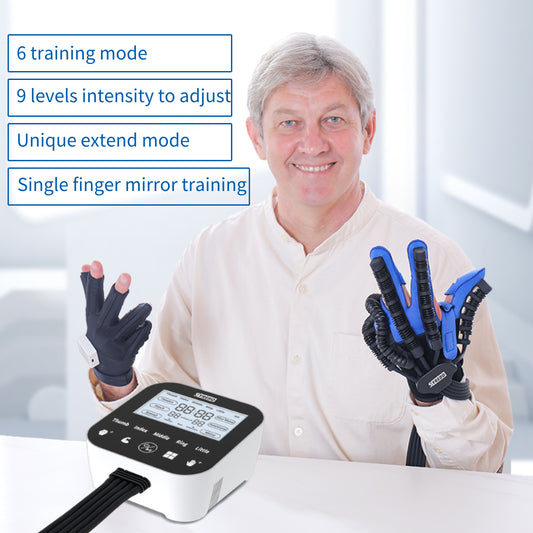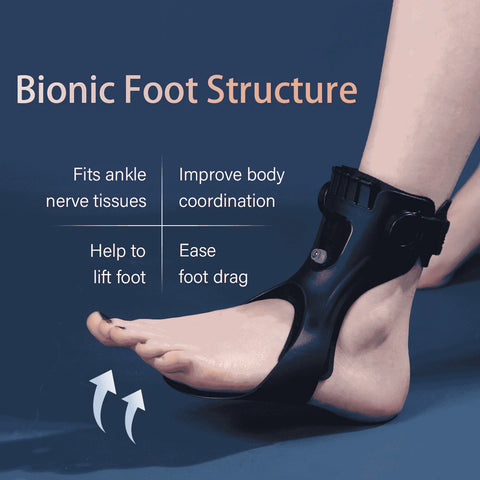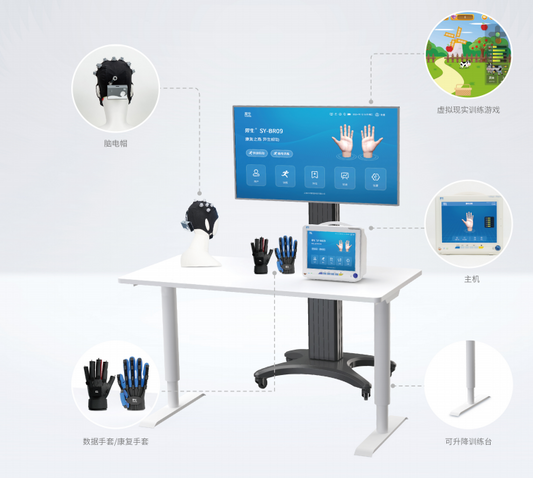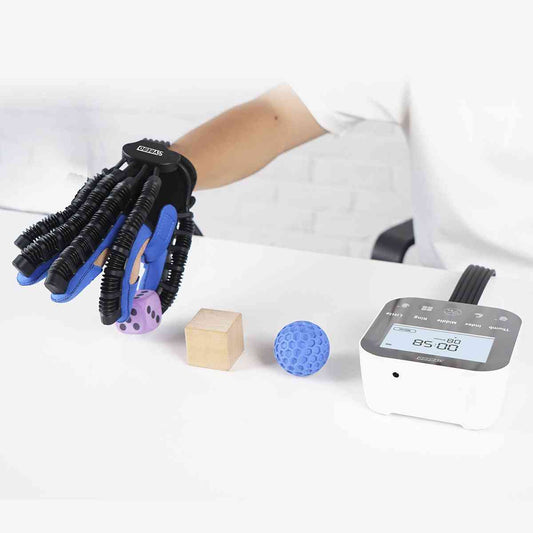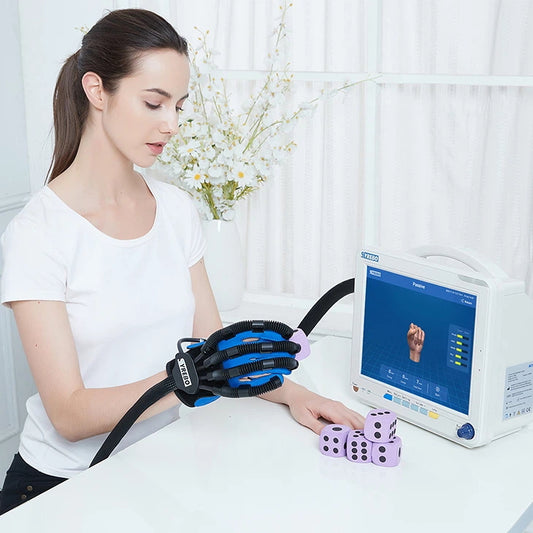How to Fix Foot Drop: Understanding the Steps Toward Recovery
To understand how to address foot drop and promote recovery, it is important to first understand the various causes and symptoms of foot drop.
Foot drop refers to the inability to lift the front part of the foot, also known as ankle valgus, and is usually caused by neurological damage such as a stroke or traumatic brain injury. Foot drops can make walking and daily activities difficult. It can also increase the risk of tripping, falling, or further injury.
Fortunately, foot drop can often be improved with a proper rehabilitation program that helps activate neuroplasticity—the nervous system's ability to naturally rewire and heal itself. While everyone's road to recovery is different, there are many effective ways to improve foot drop.
This article will discuss how to address foot drops and maximize your chances of recovery.
What Is a Foot Drop?
Foot drop (also called drop foot) happens when you can’t raise the front part of your foot due to weakness or paralysis of the muscles that lift it. It’s a symptom of several possible underlying conditions and can be temporary or long-term (chronic).
Due to weakness or paralysis, people who have foot drops often drag their toes when they walk. They may also have to lift their knees higher than usual to avoid dragging their toes. Walking this way may increase your risk of tripping and falling.
Foot drops can affect one of your feet (unilateral) or both of them (bilateral).
Imaging Tests
A foot drop is sometimes caused by a mass pressing on a nerve. This could be a bony growth in the spinal canal or a tumor or cyst that is pressing on a nerve in the knee or spine. Imaging tests can help identify these types of problems.
- X-rays. Plain X-rays use low levels of radiation to look at soft tissue masses or bone lesions that may be causing symptoms.
- This technique uses sound waves to generate images of internal structures and can check for cysts or tumors on nerves or show swelling of nerves due to pressure.
- CT scan. This technique combines X-ray images taken from several different angles to create a cross-sectional view of structures within the body.
- Magnetic Resonance Imaging (MRI). This test uses radio waves and a strong magnetic field to produce detailed images of bones and soft tissues. MRI is especially helpful in visualizing soft tissue lesions that may be pressing on nerves.
Possible Causes
There are several possible causes of foot drop, usually a problem with the nerves and/or muscles. The most common causes are lumbar spondylosis and peroneal nerve injuries.
Other causes include:
- Brain disorders.
- Motor neuron disease.
- Peripheral neuropathy
- Muscle disorders
Signs and Symptoms of Foot Drop
Foot drops can affect gait (the way you walk) by making it difficult to lift the front part of your foot. As a result, your foot or toes may drag on the floor when you walk or perform daily activities.
Depending on the cause of the foot drop, it may affect one or both of your feet. Impaired foot dorsiflexion can make it difficult for you to walk on uneven surfaces, maintain your balance, or climb several flights of stairs.
Symptoms of foot drop may be persistent or intermittent, with brief periods of normal foot strength in between.
Common signs and symptoms of foot drop include
- Tripping or falling
- Limping or toe-dragging
- Numbness or weakness
- Decreased muscle mass around the shins and feet
- High stride gait: characterized by walking with the thigh elevated and taking large steps
- Abduction gait: the leg swings to the side as you stride, instead of flexing the knee and ankle
- Arching gait: pushing upward with the toes of the opposite foot to help lift the body and provide more room for the affected foot to step.
Depending on the severity, some people may experience a few of these symptoms, while others may experience most of them.
However, if you experience any new or recurring symptoms, be sure to consult with your doctor. They can evaluate your symptoms and provide you with an accurate diagnosis and an appropriate treatment plan.
Treatment
Treatment for foot drops depends on the cause. If the cause is successfully treated, foot drop might improve or even disappear. If the cause can't be treated, a foot drop can be permanent.
Treatment for foot drops might include:
- Braces or splints. A brace on your ankle and foot or splint that fits into your shoe can help hold your foot in a normal position.
- Physical therapy. Exercises can strengthen your leg muscles and help you maintain the range of motion in your knee and ankle. These exercises might improve gait problems associated with foot drops. Stretching exercises are particularly important to prevent stiffness in the calf and heel. Check out the relevant physical therapy guidelines.
- Nerve stimulation. Sometimes stimulating the nerve that lifts the foot improves foot drop.
- Depending on the cause and if your foot drop is relatively new, nerve surgery might be helpful. If foot drop is long-standing, your doctor might suggest surgery that transfers a working tendon to a different part of the foot to improve function.
5 Foot Drop Exercises
Specific foot-drop exercises that strengthen the foot, ankle, and calf muscles can help improve symptoms in some cases. Exercises are important for improving range of motion, preventing injury, improving balance and gait, and preventing muscle stiffness.
As with any exercise program, consult your healthcare professional before beginning. If any of the following exercises cause pain or harm to your body, stop immediately. It is best to work with a trained professional for guidance and safety.
Sit on the floor with your legs straight in front of you. Wrap a towel or sweatband around the affected foot and grasp the ends with your hands. Pull the towel or band toward your body. Hold for 30 seconds. Then relax for 30 seconds. Repeat 3 times.
Stand in front of a table, chair, wall, or another sturdy object you can hold onto for support. Rock your weight forward and rise up onto your toes. Hold this position for 5 seconds. Next, rock your weight backwards onto your heels and lift your toes off the ground. Hold for 5 seconds. Repeat the sequence 6 times.
- Marble Pickup
Sit in a chair with both feet flat on the floor. Place 20 marbles and a bowl on the floor in front of you. Using the toes of your affected foot, pick up each marble and place it in the bowl. Repeat until you have picked up all the marbles.
Sit on the floor with both legs straight out in front of you. Take a resistance band and anchor it to a stable chair or table leg. Wrap the loop of the band around the top of your affected foot. Slowly pull your toes towards you, then return to your starting position. Repeat 10 times.
Sit on the floor with both legs straight out in front of you. Take a resistance band and wrap it around the bottom of your foot. Hold both ends in your hands. Slowly point your toes, then return to your starting position. Repeat 10 times.
When To Call The Doctor
When should foot drops be treated by a doctor or healthcare provider?
If you’re unable to lift your foot or feet like you used to, see a healthcare provider. They’ll need to find the underlying cause to form a treatment plan.


